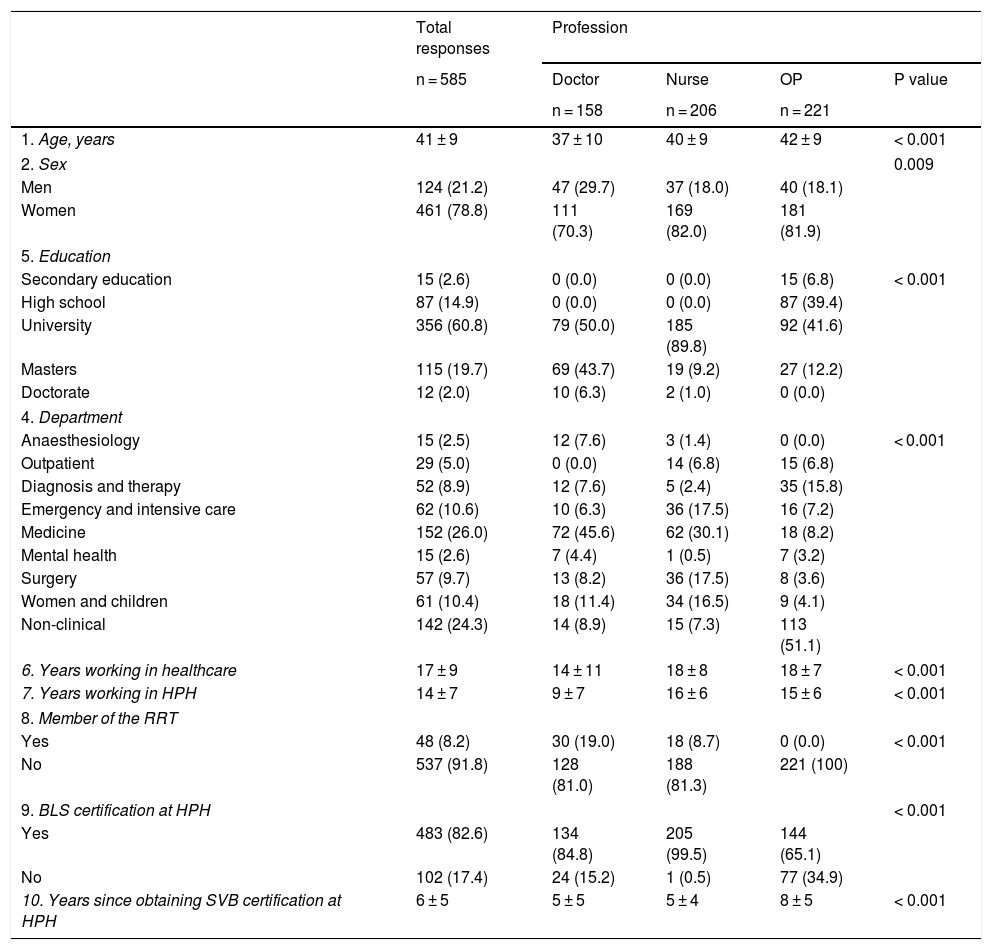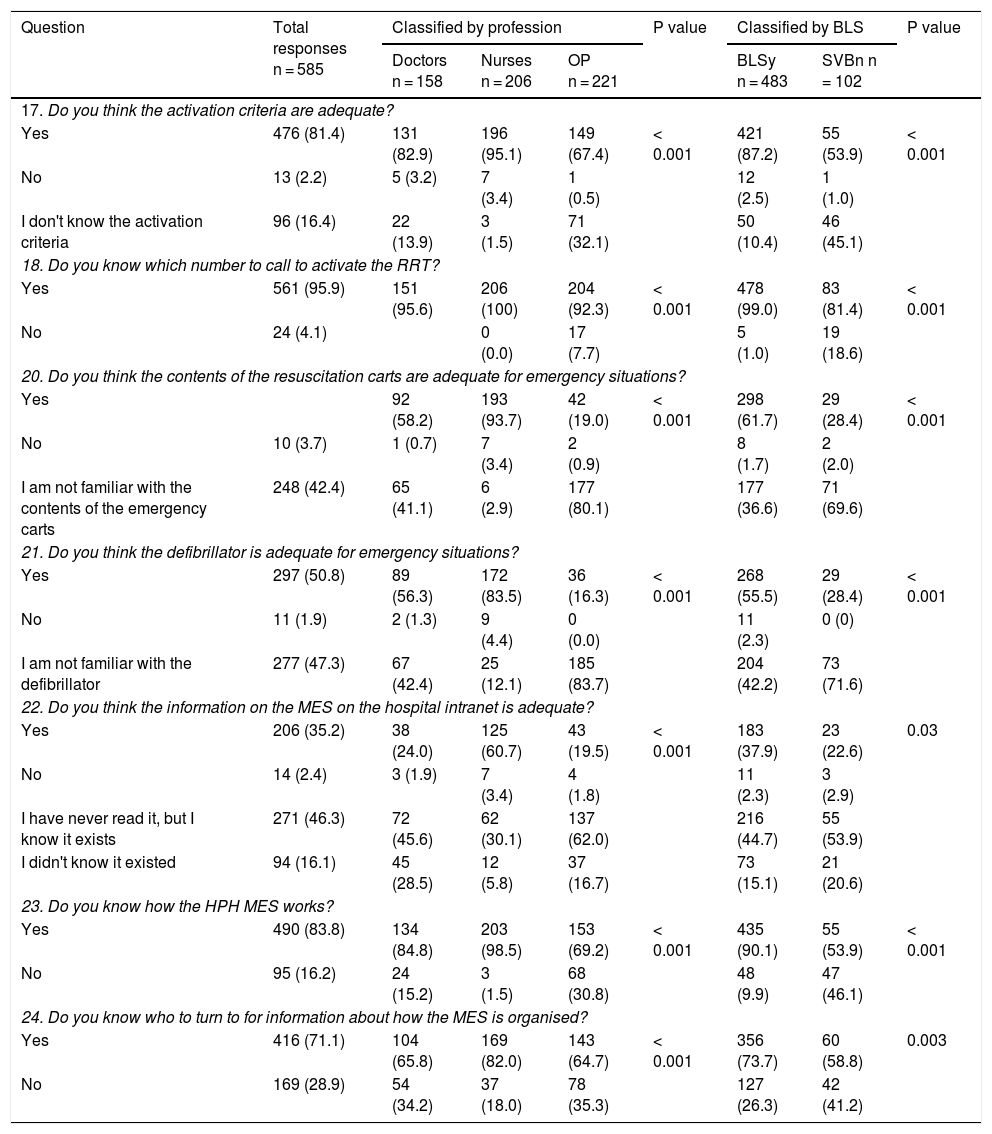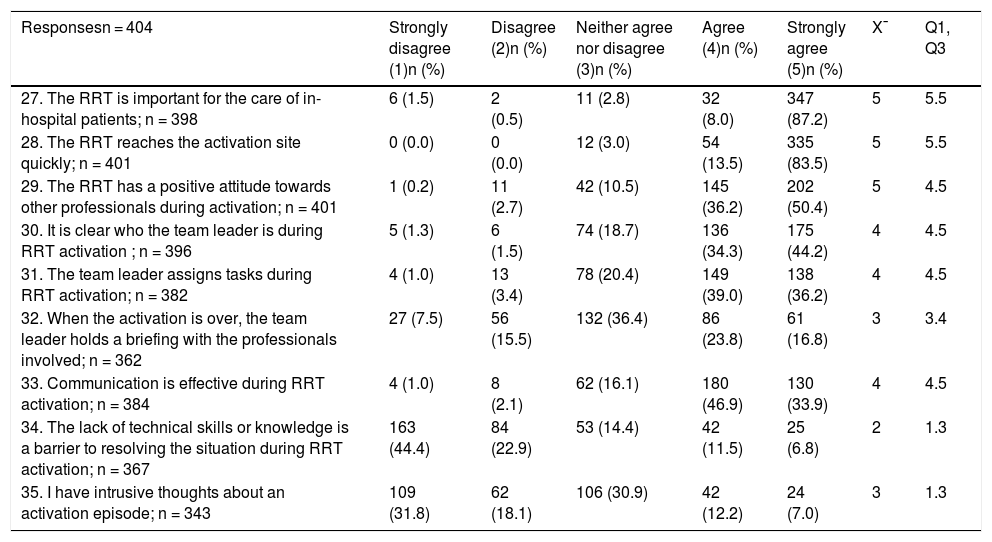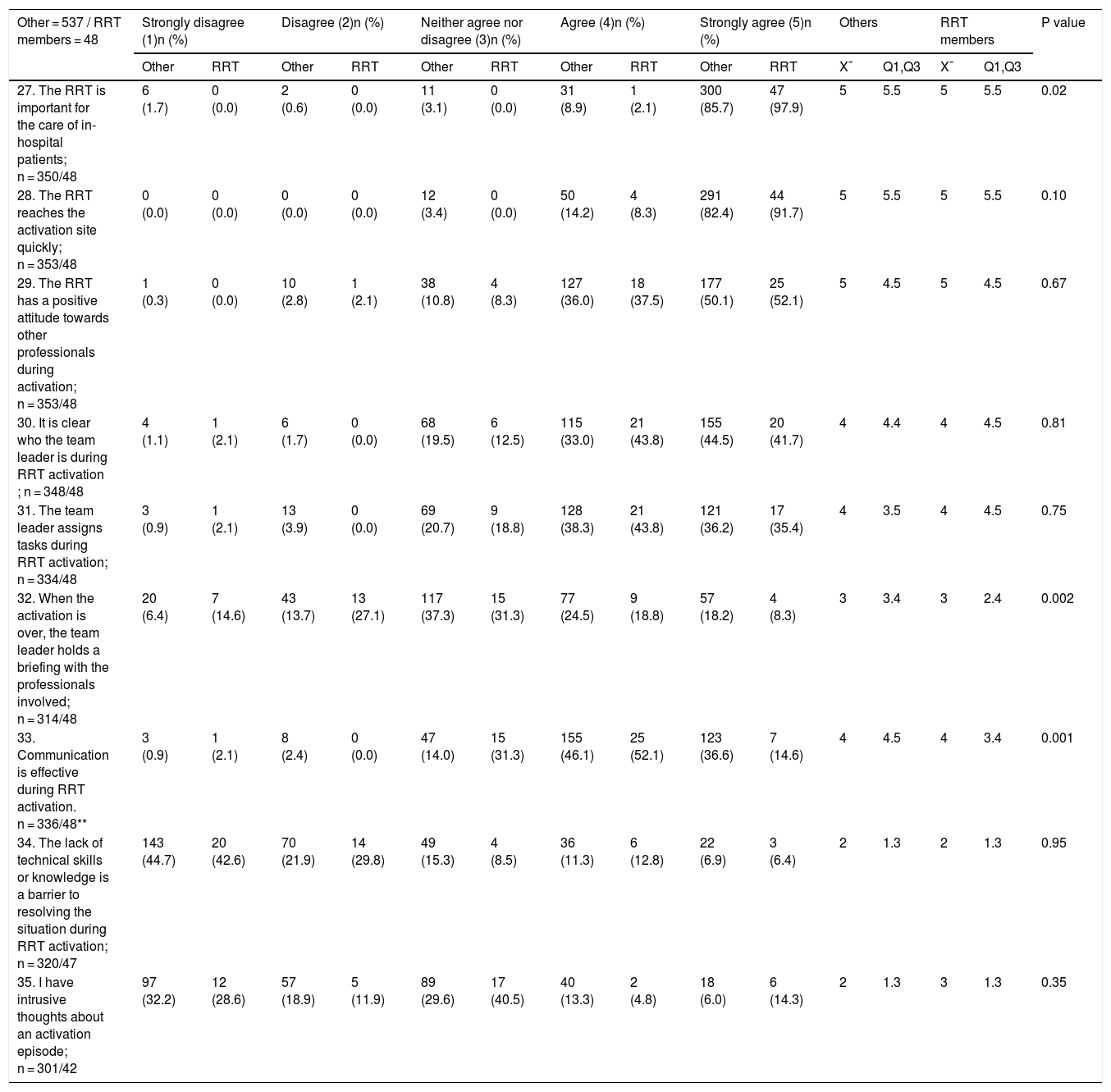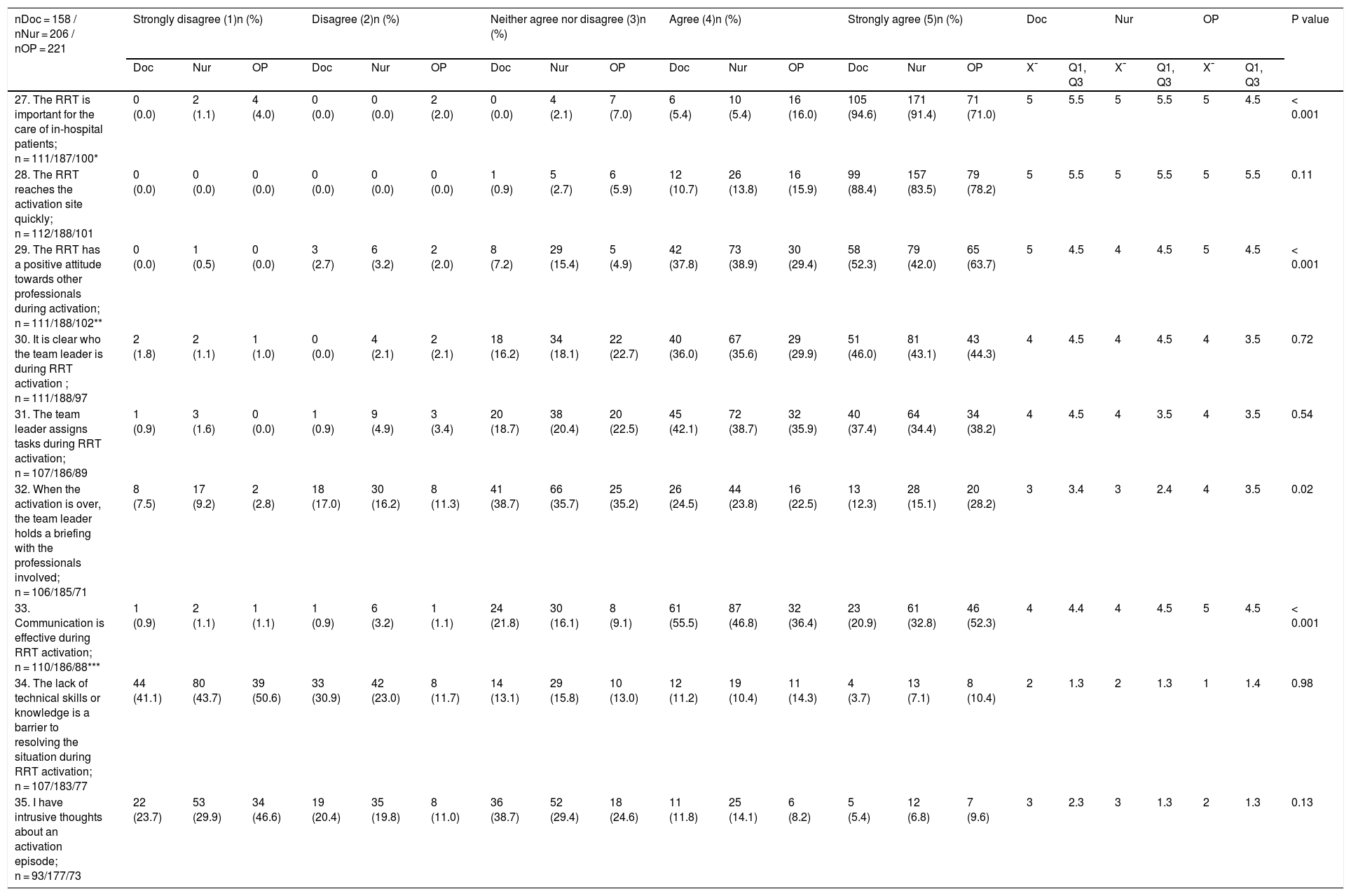This study aimed to identify ways to improve the Medical Emergency System (MES) in its different components and infer Medical Emergency Team (MET) activation failure causes.
MethodsA questionnaire regarding opinions and attitudes towards the MES was conducted, targeting all professionals at the hospital, which has an implemented MES with Basic Life Support (BLS) since 1998.
ResultsThirty two percent (n=585) of hospital professionals answered, from these 37.8% were neither doctors nor nurses. In mean six years passed since the BLS certification, yet 102 professionals (17.4%) had not done it. A relevant percentage admitted to not being familiarized with the different components of the MES (activation criteria 16.4%, telephone number 4.1%, content of the resuscitation trolleys 42.4% and defibrillator-monitor 47.4%), percentages lessened among those had taken the BLS course. The majority highly valued MET, however 83 (23%) could not confirm that debriefingand 17 (4.4%) that allocation of tasks happened after and during activation, respectively. When activating MET 52 (18.1%) admitted fear of criticism and 38 (13.3%) agreed that they needed validation by another professional, factors not influenced by BLS course completion. Excessive workload as a barrier to recognise ill patients was pointed by 127 (45.7%) of the respondents.
ConclusionDespite educational and auditing efforts, the MES is not fully integrated into hospital culture. BLS certification for all professionals and non-technical skills of MET were identified has major areas for MES improvement. Unfamiliarity with activation criteria, fear of criticism and excessive workload were identified as failure of activation causes.
Este estudio tuvo como objetivo identificar formas de mejorar el sistema de emergencia médica (SEM) en sus diferentes componentes, e inferir las causas de fallo de activación del equipo de emergencia médica (EEM).
MétodosSe realizó un cuestionario sobre opiniones y actitudes hacia el SEM, dirigido a todos los profesionales del hospital, que tiene un SEM implementado con soporte vital básico (SVB) desde 1998.
ResultadosEl 32% (n = 585) de los profesionales del hospital respondió, de estos el 37,8% no eran médicos ni enfermeras. En promedio pasaron 6 años desde la certificación SVB, sin embargo, 102 profesionales (17,4%) no lo habían hecho. Un porcentaje relevante admitió no estar familiarizado con los diferentes componentes del SEM (criterios de activación 16,4%, número de teléfono 4,1%, contenido de los aparatos de reanimación 42,4% y monitor desfibrilador 47,4%), porcentajes disminuidos entre aquellos que habían tomado el curso SVB. La mayoría de los profesionales valoraran la EEM como muy importante, sin embargo 83 (23%) no pudieron confirmar que el informe y 17 (4,4%) que la asignación de tareas sucedió después y durante la activación, respectivamente. Al activar la EEM 52 (18,1%) admitieron temor a las críticas y 38 (13,3%) acordaron que necesitaban validación por parte de otro profesional, factores no influenciados por la finalización del curso SVB. Ciento veintisiete (45,7%) de los encuestados señalaron una carga de trabajo excesiva como barrera para reconocer a los pacientes enfermos.
ConclusiónA pesar de los esfuerzos educativos y de auditoría, el SEM no está completamente integrado en la cultura hospitalaria. La certificación SVB para todos los profesionales y las habilidades no técnicas de EEM identificadas son áreas de potencial mejoría del SEM. La falta de familiaridad con los criterios de activación, el miedo a las críticas y la carga de trabajo excesiva se identificaron como fallos en las causas de activación.





